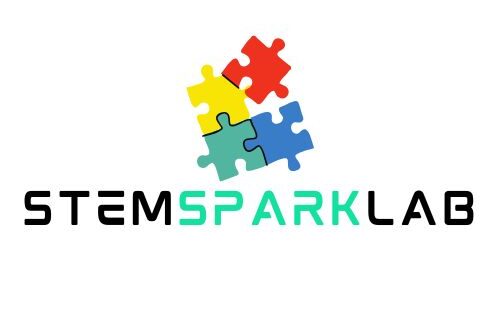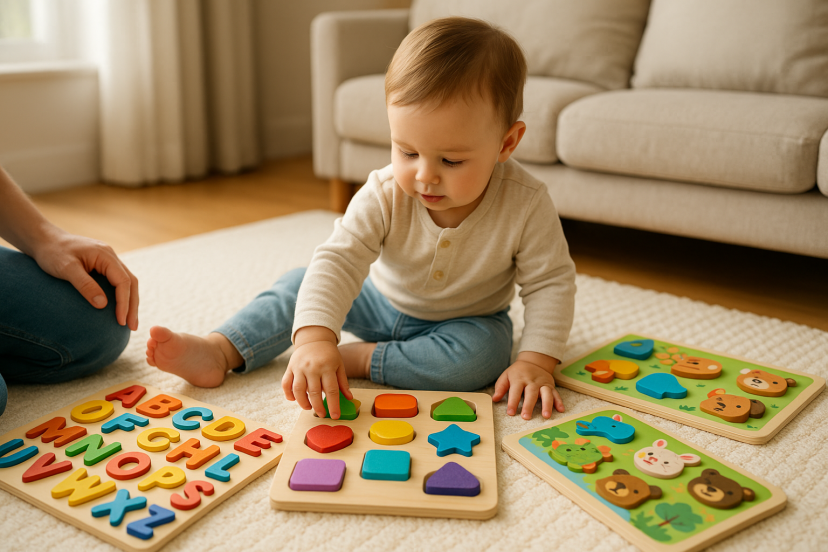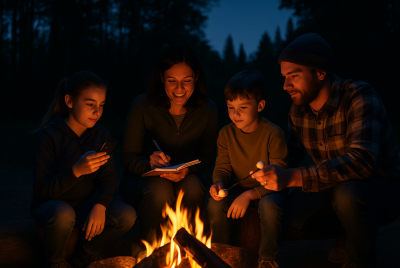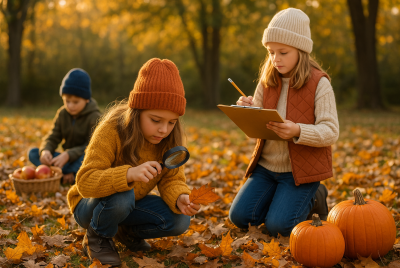Wooden Puzzles for Toddlers: Fun & Educational Playtime Ideas
We may earn a commission for purchases made using our links. Please see our disclosure to learn more.
There’s something timeless about the click-clack sound of a wooden puzzle piece fitting perfectly into place, isn’t there? It’s not just a toy moment — it’s a spark of curiosity, a gentle hum of concentration, and that proud little smile when your toddler figures something out all by themselves.
If you’re a parent, aunt, grandparent, or someone who just loves watching kids learn, you’ve probably noticed that wooden puzzles for toddlers have made a big comeback. And it’s not because they’re trendy — it’s because they bring back something we’ve lost in the age of screens: simple, hands-on learning.
In this guide, we’ll talk about why wooden puzzles are more than just cute toys, what makes them such powerful learning tools, and the best ones you can grab from Amazon today. So grab a cup of tea (or a juice box if you’re multitasking parent-style) — let’s chat about why these little wooden wonders are worth every penny.
Why Wooden Puzzles Are More Than Just Toys
Walk into any modern playroom and you’ll find toys that light up, sing, and move at the press of a button. They’re exciting — for a few minutes. But after the novelty fades, what’s really left for your child to learn?
That’s where wooden puzzles come in. These classic toys encourage children to slow down, think critically, and explore through touch. When your little one turns a puzzle piece in their hands, studies the shapes, and finally fits it into the right spot, they’re not just playing — they’re building mental muscles.
This kind of play lays the groundwork for important future skills like reading comprehension, logical reasoning, and math awareness. And unlike digital toys that reward quick wins, puzzles teach perseverance — the valuable habit of trying again after each small mistake until everything fits perfectly.
In short, wooden puzzles aren’t just pastimes; they’re quiet teachers disguised as toys. That’s why parents, teachers, and even child development experts swear by them.
The Hidden Lessons Behind Puzzle Play
Wooden puzzles may look simple, but they offer layers of growth that go far beyond entertainment. Here’s what your toddler is really learning during puzzle time:
- Fine Motor Development: Handling and rotating puzzle pieces strengthens little fingers and improves hand-eye coordination.
- Cognitive Skills: Each attempt helps children learn to plan, predict, and problem-solve.
- Shape & Color Awareness: Recognizing patterns, outlines, and hues boosts visual processing and memory.
- Emotional Growth: That proud smile when the final piece fits in? It’s confidence taking root.
As one parent shared on a forum, “The look on my son’s face when he finishes his puzzle is priceless — he acts like he just solved a mystery!”
That’s the beauty of wooden puzzles: every success, no matter how small, gives your child a reason to believe in themselves.

Wooden vs. Plastic: Why Parents Are Switching
Sure, plastic toys are cheaper and come in bulk. But they often crack, lose color, and contribute to clutter (and plastic waste). Wooden puzzles are built differently — literally.
They’re solid, sturdy, and beautifully simple. The smooth texture and weight of wood help children connect physically and emotionally to what they’re doing. And most high-quality sets are painted with eco-friendly, non-toxic dyes, making them safer for little hands (and mouths).
Plus, there’s a sustainability bonus — wood toys are biodegradable and often sourced from renewable forests. So by choosing wooden puzzles, you’re not just nurturing your toddler — you’re helping the planet too.
How to Choose the Right Puzzle for Your Toddler
Shopping for puzzles can be overwhelming — there are so many cute designs out there! But here’s a quick guide to help you pick the perfect one:
- Check the Age Label: Look for large, easy-to-grasp pieces for ages 1–2 and more intricate designs for ages 3–4.
- Start Simple: Begin with themes your toddler already loves — animals, vehicles, or food.
- Go for Safety First: Always pick puzzles made with BPA-free paint and rounded edges.
- Think Longevity: Choose puzzles that can grow with your child, like number or alphabet sets.
Tip: If your child has a favorite cartoon or story, pick a puzzle around that theme — it instantly increases engagement!
Top 5 Wooden Puzzles for Toddlers on Amazon 🧩
Below are five hand-picked Amazon favorites that combine quality, fun, and educational value. Each one has thousands of happy reviews — and trust me, they’re not just hype!
1. Melissa & Doug Farm Animals Wooden Puzzle
This classic never goes out of style. The bright farm animals — cow, sheep, horse, and more — make learning fun and interactive.
Features:
- 8 chunky, easy-to-grip pieces
- Colorful animal illustrations
- Durable, safe wood construction
Pros: Sturdy, bright, and toddler-approved
Cons: Basic compared to multi-layer puzzles
Best For: 1–3-year-olds exploring animal sounds and shapes

2. Hape Alphabet Wooden Puzzle
Colorful letters that make learning the ABCs as fun as singing them.
Features:
- 26 uppercase letters
- Eco-friendly paints
- Encourages literacy through play
Pros: Great introduction to letters and colors
Cons: Small pieces may need supervision
Best For: 2–4-year-olds learning early literacy
3. Coogam Wooden Shape and Color Puzzle
This Montessori-style toy helps toddlers match shapes, colors, and stacking patterns — a triple learning combo!
Features:
- Vibrant geometric shapes
- Smooth edges and sturdy pegs
- Develops sorting and matching skills
Pros: Visually engaging and promotes logic
Cons: Younger toddlers may need guidance
Best For: 2–3-year-olds in sensory play and coordination
4. GRINNNIE Wooden Alphabet Puzzle for Toddlers
If you’re looking for a learning puzzle that blends fun and education perfectly, this GRINNNIE Alphabet Puzzle is a fantastic choice. It helps toddlers recognize letters while improving coordination through colorful, chunky wooden pieces.
Features:
- Includes 26 uppercase letters in bright colors
- Safe, non-toxic paint and smooth wooden edges
- Designed to promote literacy, fine motor skills, and shape recognition
Pros: Eye-catching design that keeps kids engaged
Cons: Letters are small, so supervision is recommended for younger toddlers
Best For: Ages 2–4, especially those starting to learn their ABCs
5. Yetonamr Wooden Vehicle Puzzle Set for Toddlers
If your toddler loves cars, trucks, and all things that go “vroom,” this Yetonamr Wooden Vehicle Puzzle Set will be a hit. With six adorable vehicle-shaped puzzles, it combines playtime fun with hands-on learning that strengthens coordination and recognition.
Features:
- Includes 6 colorful vehicle-shaped puzzles (car, truck, bus, etc.)
- Made from natural wood with smooth, child-safe edges
- Uses non-toxic, eco-friendly paint
- Encourages shape matching, fine motor skills, and imaginative play
Pros: Bright designs, great for transportation-loving toddlers
Cons: Slightly simple for kids over 3 years old
Best For: Ages 1–3 who enjoy vehicles and hands-on play
Comparison Table: Best Wooden Puzzles for Toddlers
| Product | Age Range | Educational Focus | Rating | Best For |
| Melissa & Doug Farm Animals | 1–3 yrs | Animal recognition | ⭐4.8 | Beginners |
| Hape Alphabet Puzzle | 2–4 yrs | Letter learning | ⭐4.7 | Early literacy |
| Coogam Shape & Color Puzzle | 2–3 yrs | Shapes & logic | ⭐4.9 | Visual learning |
| GRINNNIE Alphabet Puzzle | 2–4 yrs | Letters & motor skills | ⭐4.7 | ABC learning |
| Yetonamr Wooden Vehicle Puzzle Set | 1–3 yrs | Vehicles & shape matching | ⭐4.7 | Car-loving toddlers |
How to Make Puzzle Time Magical (and Not Messy)
Let’s be real — toddlers don’t always sit still. But you can make puzzle time something they look forward to every day.
Here’s how:
- Tell stories around the pieces: “The lion’s looking for his jungle friends. Can you help him?”
- Use voices and sound effects: Make it playful — it keeps them engaged.
- Celebrate progress: Even fitting one piece deserves applause.
- Mix puzzles with songs: Try pairing animal puzzles with nursery rhymes.
When playtime becomes storytime, learning happens naturally.
🧠 Research-Backed Insights: Why Wooden Puzzles Work Wonders
It’s not just parents saying puzzles are good for kids — science agrees too.
A fascinating study on early puzzle play followed children between ages two and four and found that those who played with puzzles regularly developed stronger spatial reasoning and problem-solving skills by age four and a half. The researchers also noted that when parents actively guided the play — asking questions or celebrating little wins — the benefits were even greater. In short, puzzles don’t just entertain; they shape how a child thinks and learns about space, shape, and logic.
Another study on puzzle design and child development discovered that thoughtfully crafted puzzles can positively influence multiple areas of growth, including cognitive, motor, linguistic, social, and emotional development. When children were given puzzles with appropriate complexity and engaging designs, their learning outcomes improved noticeably across all these domains.
Together, these findings show that something as simple as a wooden puzzle can be a powerhouse for your toddler’s brain — helping them grow curious, confident, and capable one piece at a time.

Caring for Wooden Puzzles (Because Toddlers Are Messy)
Here’s how to keep your puzzles looking good as new:
- Wipe gently with a soft, damp cloth — no soaking!
- Avoid harsh cleaners that might strip the paint.
- Let them air dry before storing.
- Keep them in mesh bags or small boxes to prevent missing pieces.
Think of it as puzzle TLC — a little care goes a long way.
Cultural Spotlight: Wooden Puzzles Around the World
Wooden puzzles have a surprisingly rich history. In Japan, traditional kumiki puzzles were used to teach patience and problem-solving to children. In Europe, artisans crafted wooden brain teasers to spark creativity and dexterity centuries before screens ever existed.
Today, Montessori educators worldwide continue that tradition — showing that play is not a distraction from learning, but its most natural form.
Creative Ways to Use Wooden Puzzles Beyond Play
- Wall Décor: Frame finished puzzles as your child’s art!
- Story Prompts: Ask your child to make up a story using the puzzle pieces.
- DIY Sensory Tray: Combine puzzle pieces with sand or rice for hands-on exploration.
- Sibling Play: Older siblings can “teach” younger ones — teamwork and bonding in one.
Often, it’s the simplest toys that inspire the biggest bursts of creativity.
FAQs About Wooden Puzzles for Toddlers
1. Are wooden puzzles safe for toddlers?
Yes — as long as they’re non-toxic and age-appropriate. Always check labels for certifications like ASTM or CPSIA compliance.
2. At what age can toddlers begin enjoying puzzle play?”
Simple knob puzzles are great for 12–18 months. By age 3, most kids can handle multi-piece jigsaws.
3. How can I make puzzles more educational?
Add learning layers: count pieces, name colors, or talk about animals’ habitats.
4. Are wooden puzzles Montessori-approved?
Yes! They fit perfectly into Montessori learning, which values hands-on, tactile exploration.
5. How many puzzles should I get for my toddler?
Three to five puzzles of varying complexity are ideal — it keeps things fresh without overwhelming them.
Helpful Resource
If you love activities that help kids grow through fun, check out goal trackers for kids and families — they’re perfect for teaching consistency, focus, and follow-through, even outside playtime.
Conclusion: Where Play Meets Purpose
At the end of the day, wooden puzzles for toddlers are more than just a pastime. They’re mini lessons in problem-solving, persistence, and patience.
Every time your toddler fits a piece, they’re telling themselves, “I can do this.” And that belief — that quiet confidence — is worth more than any electronic toy.
So next time you’re looking for a meaningful gift or learning tool, go for the simplicity of wood, the warmth of touch, and the joy of play. Your child’s future self will thank you for it. 🌱




